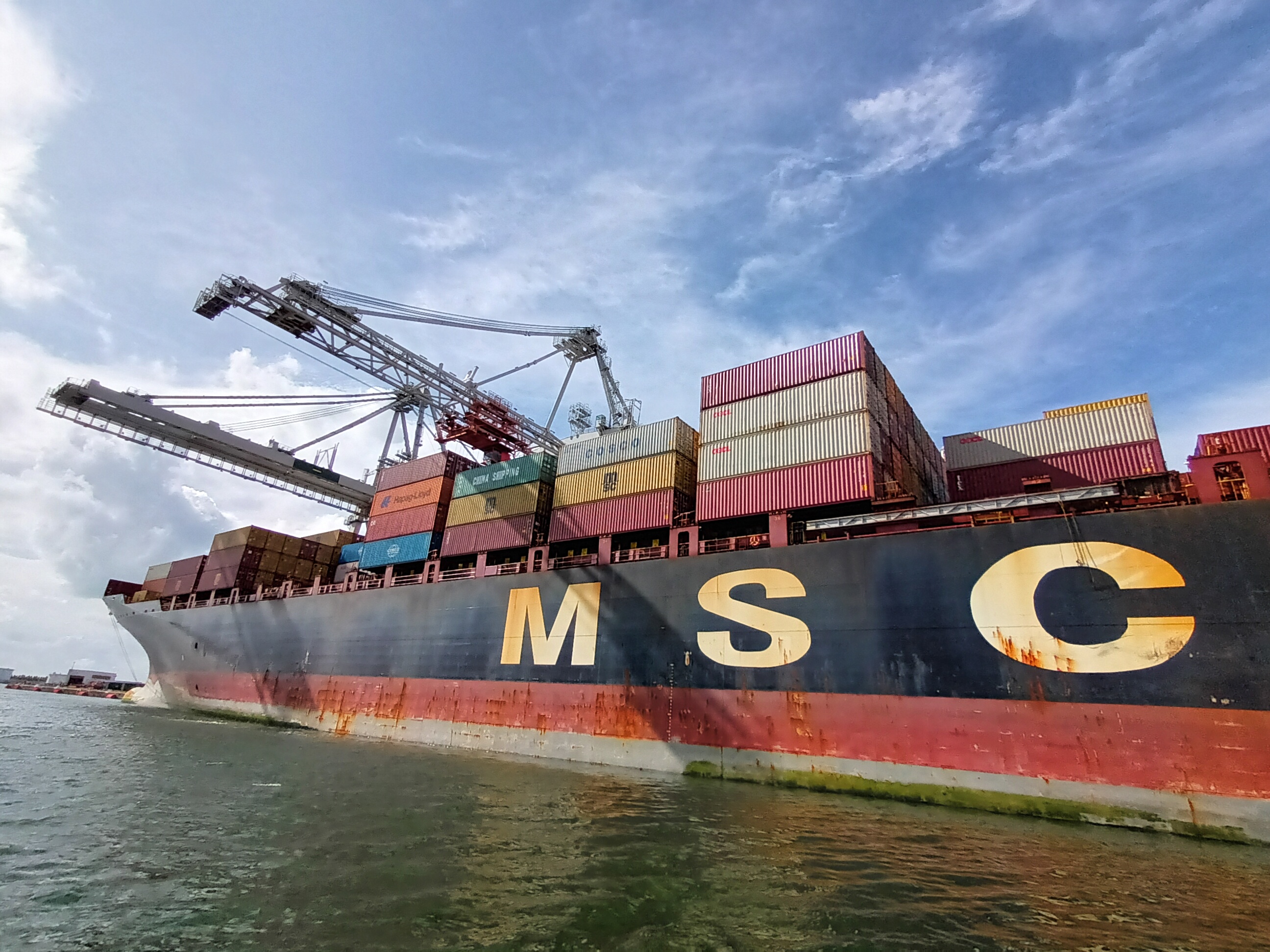3.1. General characteristics of containerisation

The system of containerization was established in the 1930’s in North American coastal trade, and, since then, has greatly facilitated trade expansion. Today, about 90% of non-bulk cargo worldwide is transported by container ships. On a container vessel, merchandise is distributed in a unitized form thereby permitting an intermodal transport system to be developed providing a possible combination of rail, road, canal, and maritime transport.
Container berths are either purpose-built for exclusive container use or multi-purpose in which containers and other types of cargo vessels are handled. The purpose-built container berth is usually more efficient and produces the most productive container throughput.
The most modern container berths are computer-operated and handle double-stack container traffic. To make port operations even faster, modern container systems now use large cranes that move containers overhead to and from the berthed vessel instead of using the traditional straddle carrier. Such cranes can handle up to five containers at once. This system allows both the shipside crane and the yard gantry crane to operate simultaneously but independently, which clearly saves time.
Container traffic through a port is tracked in terms of twenty-foot equivalent units (TEU) of throughput. As of 2019, the Port of Shanghai is the world's busiest container port, with over 40 million TEU handled.
The advantages of containerization far exceed the disadvantages. Containerization changed not only the face of shipping but also revolutionized world trade. Containerization has increased the efficiency of moving traditional break-bulk cargoes significantly, reducing shipping time by 84% and costs by 35%. A container ship can be loaded and unloaded in a few hours compared to days in a traditional cargo vessel. This, besides cutting labor costs, has greatly reduced shipping times between ports. In a few hours, a ship can be filled with containers destined for another port and can be underway. It has resulted in less breakage due to less handling; also, there is less danger of cargo shifting during a voyage. As containers are sealed and only opened at the destination, pilferage has been greatly reduced, and, hence, the insurance rates have also declined.
The disadvantages of containerization are few but they cannot be ignored. First of all, each ship carries less volume of cargo in containers than in regular bulk stowage. Moreover, substantial capital investment is needed in port facilities, such as special berths, cargo-handling gear, storage areas, and links to land transportation, all of which must be made by the ports accommodating container ships.